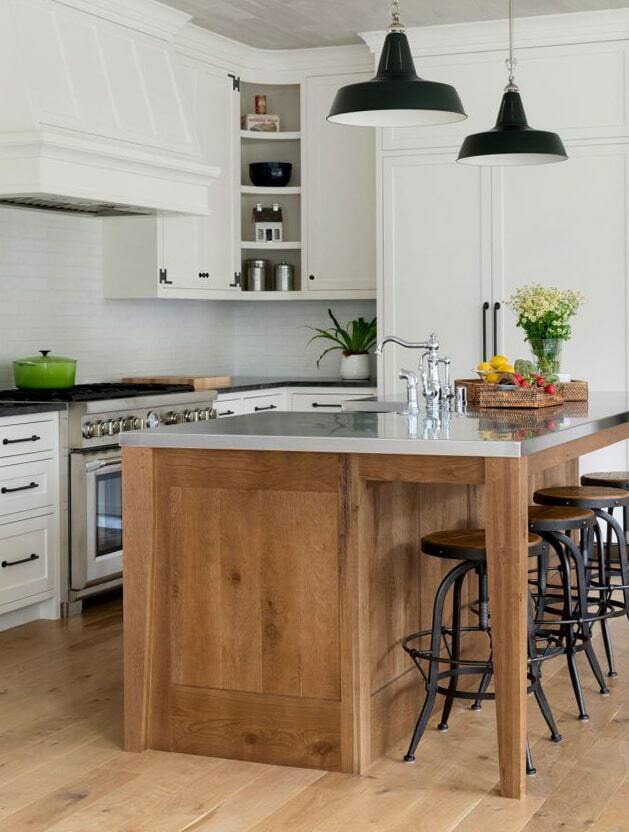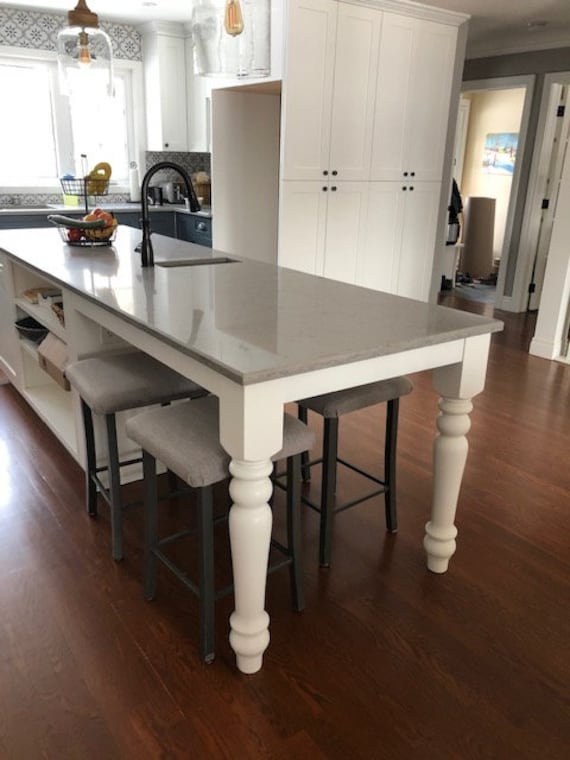Exploring the Crucial Functions of a Cooking Area Island Leg for Your Culinary Room
The kitchen island offers as a central center in any type of cooking area, and the choice of leg style is essential in enhancing both its functionality and visual allure. Understanding the vital attributes of kitchen island legs-- including material choices, style styles, and stability elements-- can dramatically affect the overall experience within the cooking area. As we check out these components, we will reveal exactly how thoughtful customization and accessories can boost your kitchen area island from a plain utility to a striking focal point. What certain considerations should be prioritized to achieve this balance?
Value of Kitchen Area Island Legs
Cooking area island legs play a crucial function in both the functionality and aesthetics of a cooking area space. They not just sustain the weight of the island yet also enhance the general layout, adding to the kitchen's visual charm. The selection of legs can determine the style of the kitchen, be it contemporary, standard, or rustic.
Functionally, durable and effectively developed legs make certain security, allowing for the secure use of the island for different tasks such as food preparation, eating, or entertaining. Strong legs prevent tottering and moving, giving a reputable surface for everyday tasks.
Moreover, the elevation and placement of the legs can influence the convenience degree for those seated at the island. A well-considered elevation can suit bar stools or chairs, promoting a welcoming atmosphere for celebrations.
In addition to these useful factors to consider, cooking area island legs can work as a centerpiece in the room (kitchen island leg). Ornamental or distinctively created legs can boost the layout visual, making the island a focal point. Therefore, picking the right kitchen island legs is necessary for stabilizing kind and feature in any kind of cooking area
Product Options for Legs
Choosing the proper material for kitchen island legs considerably affects both longevity and layout. Usual product alternatives include stone, steel, and timber, each offering distinctive benefits.
Timber is a preferred option because of its warmth and flexibility. It can be quickly customized to match various style designs, from rustic to contemporary. Hardwoods like oak and maple offer outstanding strength and long life, while softer timbers can be extra susceptible to tear and put on.
Steel legs are favored for their smooth, modern-day visual. kitchen island leg. Stainless-steel and aluminum are not just robust however additionally resistant to corrosion and corrosion, making them suitable for kitchen area environments. They can produce an industrial look and are frequently readily available in various surfaces to complement other kitchen area components
Stone legs, such as granite or marble, add a component of luxury and stability. While larger than other materials, they supply outstanding toughness and can withstand considerable weight. Nonetheless, they may need added assistance to guarantee appropriate equilibrium.
Inevitably, the option of material need to straighten with both practical demands and the overall style vision of the kitchen area area, guaranteeing that the island legs improve both utility and aesthetic appeals.
Layout Styles to Take Into Consideration
What style styles should be considered when picking legs for a kitchen area island? The selection of leg design considerably influences the total visual of your culinary space. For a modern kitchen area, sleek and minimalistic leg designs, such as stainless-steel or geometric shapes, can boost the contemporary allure, supplying a clean and uncluttered appearance.
On the other hand, traditional cooking areas gain from traditional designs such as turned or sculpted wood legs, which add heat and personality. These options usually feature complex information that complement vintage home furnishings. For a rustic ambiance, think about legs made from redeemed wood or wrought iron, which bring a natural, earthy high quality to the room.
If you lean towards a commercial motif, robust steel legs with a troubled finish might be ideal, offering an edgy yet innovative touch. In addition, farmhouse style cooking areas can incorporate chunky legs that stimulate a feeling of durability and homeliness.

Height and Stability Variables
The height and stability of a kitchen area island are crucial components that straight impact its performance and individual experience. A perfect cooking Extra resources area island leg should offer adequate height to fit a range of tasks, from food preparation to laid-back dining.
Stability is equally essential, especially as kitchen area islands typically function as centerpieces in cooking atmospheres. A steady leg style lessens tottering and changing, which can bring about accidents or discomfort during use. Materials such as strong wood, steel, or a mix thereof are commonly utilized to accomplish the essential toughness. In addition, the leg's accessory to the island's base must be safe and secure, making sure long life and strength against the wear and tear of everyday usage.
Personalization and Accessories
Modification options and devices for kitchen area island legs can significantly boost both the aesthetic allure and performance of the area. Homeowners can pick from a range of materials, consisting of rock, wood, and steel, permitting seamless integration with existing cooking area decoration. The option of coating-- be it a natural tarnish, repaint, or powder covering-- more customizes the appearance, making certain that the island enhances the total style motif.
Along with material and surface, homeowners might likewise explore the consolidation of accessories such as attractive brackets, flexible feet, or integrated shelving. Braces can use additional assistance while contributing to a rustic or modern-day visual. Adjustable feet are especially advantageous for unequal floor covering, guaranteeing the island continues to be steady and degree, which is important for both safety and use.

Conclusion
In conclusion, kitchen island legs offer a crucial function in providing security and enhancing the total aesthetic of the culinary room. Customization options and devices can elevate the kitchen area island, making it an unique focal factor within the home.
The kitchen island serves as a central center in any kind of cooking room, and the selection of leg layout is essential in improving both its performance and visual allure. Recognizing the crucial attributes of kitchen area island legs-- including material alternatives, style styles, and stability factors-- can significantly influence the general experience within the kitchen area.Kitchen island legs play an important role in both the capability and visual appeals of a kitchen room.What style styles should be considered when picking legs for a cooking area island?In final thought, kitchen island legs offer an essential function in find out here now offering stability and enhancing the general aesthetic of the cooking area.